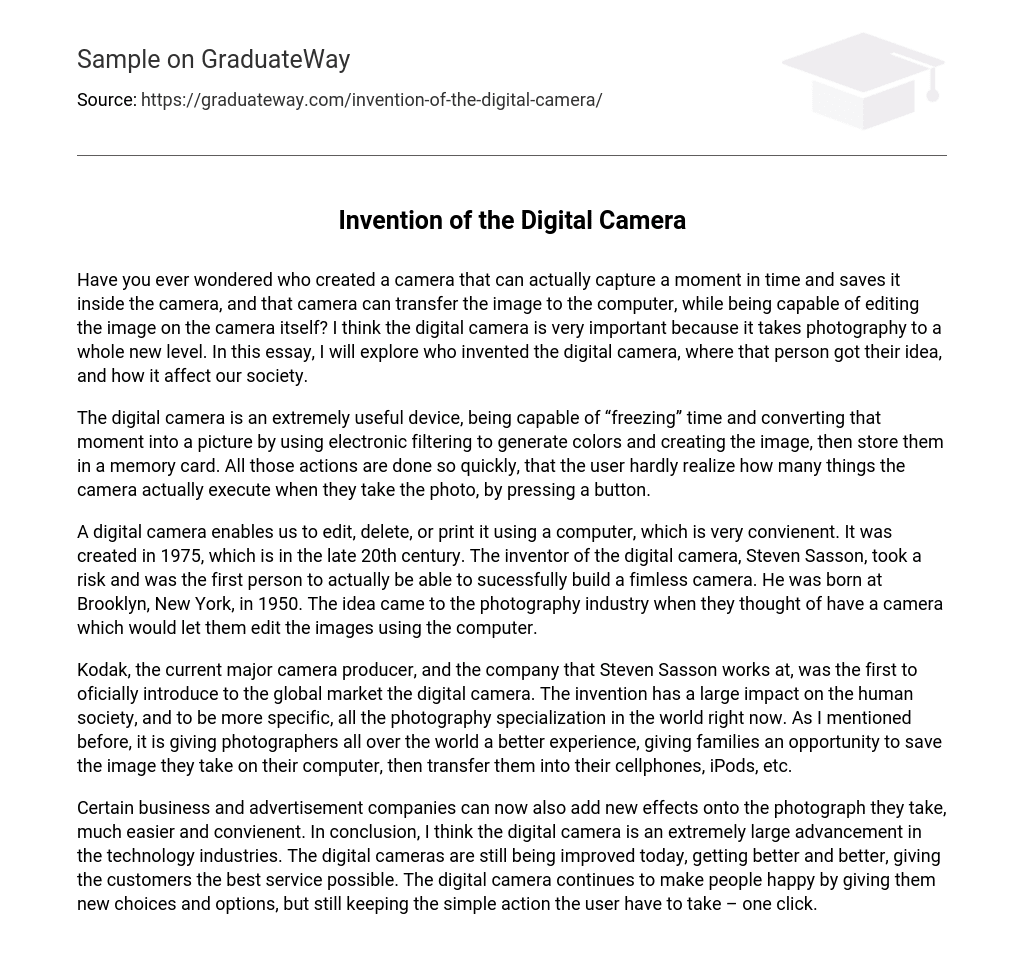The digital camera revolutionizes photography by allowing users to capture and save moments, transfer images to a computer, and edit them directly on the camera. This essay explores the creator of this innovative device, their inspiration for it, and its societal impact.
The digital camera is an advantageous device that employs electronic filtering to capture moments and convert them into pictures, creating colors and generating the image. The resulting images are stored in a memory card. These processes happen so quickly that users often do not fully grasp the numerous tasks performed by the camera when they press the photo button.
The digital camera offers convenience by enabling us to edit, delete, or print images using a computer. It was first created in 1975, marking a milestone in the late 20th century. Steven Sasson, born in Brooklyn, New York, in 1950, took a risk and became the first person to successfully build a filmless camera. The idea originated in the photography industry as they envisioned a camera that would allow for image editing through computers.
Kodak, the dominant camera manufacturer and Steven Sasson’s employer, was the first to introduce digital cameras globally. This innovation has greatly influenced society, especially in photography. As mentioned earlier, it has improved the photography process for photographers worldwide and allowed families to store and share their pictures on different devices like computers, cellphones, iPods, etc.
Certain business and advertisement companies now have the capability to easily and conveniently add new effects to the photographs they capture. Overall, I believe that digital cameras have brought significant advancements to the technology industries. These cameras are continuously being enhanced, offering customers the best possible service. The digital camera brings joy by providing users with new choices and options, while still keeping the user experience simple – just one click.





